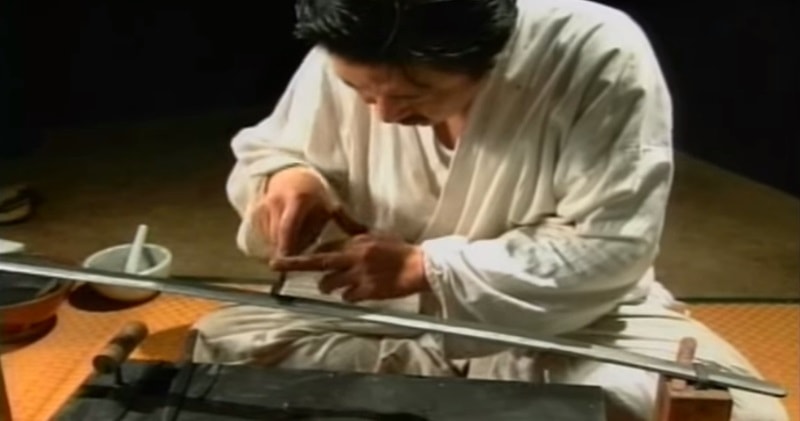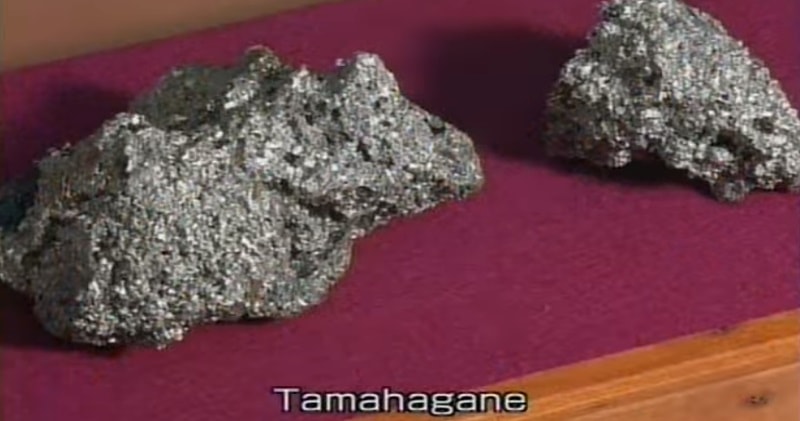The authentic Japanese sword is made from a specialized Japanese steel called “Tamahagane” which consist of combinations of hard, high carbon steel and tough, low carbon steel. There are benefits and limitations to each type of steel. High-carbon steel is harder and able to hold a sharper edge than low-carbon steel but it is more brittle and may break in combat. read more(cae12810)
source/image: cae12810
The makers of a katana take advantage of the best attributes of both kinds of steel. This is accomplished through a number of methods, most commonly by making a U-shaped piece of high-carbon steel (the outer edge) and placing a billet of low-carbon steel (the core) inside the U, then heating and hammering them into a single piece.
source/image: cae12810
The gentle curvature of a katana is attained by a process of quenching; the sword maker coats the blade with several layers of a wet clay slurry which is a special concoction unique to each sword maker, but generally composed of clay, water, and sometimes ash, grinding stone powder and/or rust. The edge of the blade is coated with a thinner layer than the sides and spine of the sword, then it is heated and then quenched in water.
Advertisement
The hardening of steel involves altering the microstructure or crystalline structure of that material through quenching it from a heat above 800 °C (1,472 °F) (bright red glow), ideally no higher than yellow hot. If cooled slowly, the material will break back down into iron and carbon and the molecular structure will return to its previous state.read more(cae12810)
After the blade is forged it is then sent to be polished. The polishing takes between one and three weeks. The polisher uses finer and finer grains of polishing stones until the blade has a mirror finish in a process called glazing. This makes the blade extremely sharp and reduces drag making it easier to cut with. The blade curvature also adds to the cutting power.












